Dark matter—hot or not?
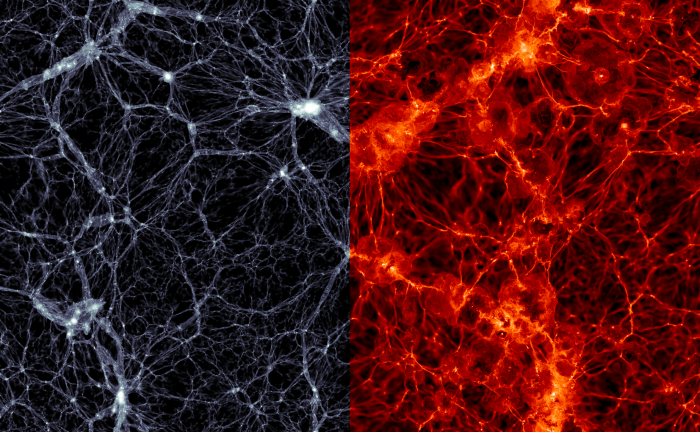
For almost a century, astronomers and cosmologists have postulated that space is filled with an invisible mass known as "dark matter". Accounting for 27% of the mass and energy in the observable universe, the existence of this matter was intended to explain all the "missing" baryonic matter in cosmological models. Unfortunately, the concept of dark matter has solved one cosmological problem, only to create another.
If this matter does exist, what is it made of? So far, theories have ranged from saying that it is made up of cold, warm or hot matter, with the most widely-accepted theory being the Lambda Cold Dark Matter (Lambda-CDM) model. However, a new study produced by a team of European astronomer suggests that the Warm Dark Matter (WDM) model may be able to explain the latest observations made of the early universe.
But first, some explanations are in order. The different theories on dark matter (cold, warm, hot) refer not to the temperatures of the matter itself, but the size of the particles themselves with respect to the size of a protogalaxy – an early universe formation, from which dwarf galaxies would later form.
The size of these particles determines how fast they can travel, which determines their thermodynamic properties, and indicates how far they could have traveled – aka. their "free streaming length" (FSL) – before being slowed by cosmic expansion. Whereas hot dark matter would be made up of very light particles with high FSLs, cold dark matter is believed to be made up of massive particles bigger that a protogalaxy (hence, a low FSL).
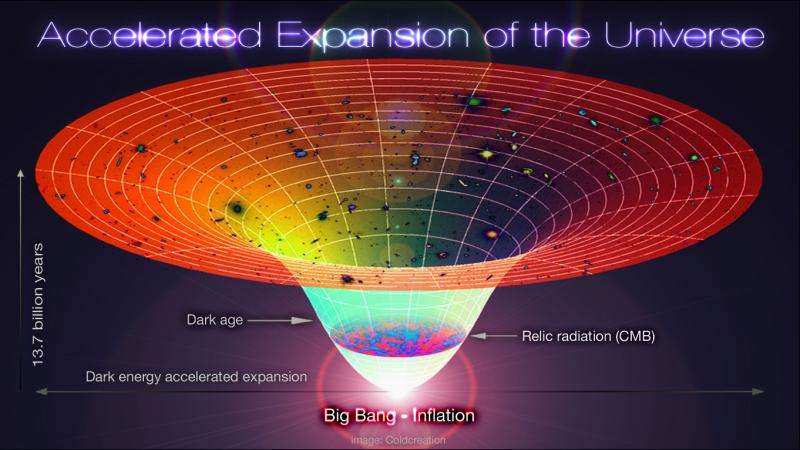
Cold dark matter has been speculated to take the form of Massive Compact Halo Objects (MACHOs) like black holes; Robust Associations of Massive Baryonic Objects (RAMBOs) like clusters of brown dwarfs; or a class of undiscovered heavy particles – i.e. Weakly-Interacting Massive Particles (WIMPs), and axions.
The widely-accepted Lambda-CDM model is based in part of the theory that dark matter is "cold". As cosmological explanations go, it is the most simple and can account for the formation of galaxies or galaxy cluster formations. However, there remains some holes in this theory, the biggest of which is that it predicts that there should be many more small, dwarf galaxies in the early universe than we can account for.
In short, the existence of dark matter as massive particles that have low FSL would result in small fluctuations in the density of matter in the early universe – which would lead to large amounts of low-mass galaxies to be found as satellites of galactic halos, and with large concentrations of dark matter in their centers.
Naturally, the absence of these galaxies might lead one to speculate that we simply haven't spotted these galaxies yet, and that IR surveys like the Two-Micron All Sky Survey (2MASS) and the Wide-field Infrared Survey Explorer (WISE) missions might find them in time.
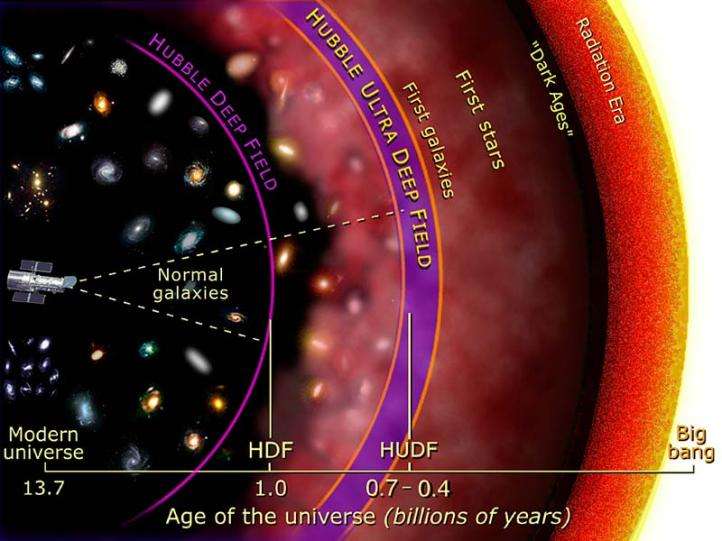
But as the international research team – which includes astronomers from the Astronomical Observatory of Rome (INAF), the Italian Space Agency Science Data Center and the Paris Observatory – another possibility is that dark matter is neither hot nor cold, but "warm" – i.e. consisting of middle-mass particles (also undiscovered) with FSLs that are roughly the same as objects big as galaxies.
As Dr. Nicola Menci – a researcher with the INAF and the lead author of the study – told universe Today via email:
"The Cold Dark Matter particles are characterized by low root mean square velocities, due to their large masses (usually assumed of the order of >~ 100 GeV, a hundred times the mass of a proton). Such low thermal velocities allow for the clumping of CDM even on very small scales. Conversely, lighter dark matter particles with masses of the order of keV (around 1/500 the mass of the electron) would be characterized by larger thermal velocities, inhibiting the clumping of DM on mass scales of dwarf galaxies. This would suppress the abundance of dwarf galaxies (and of satellite galaxies) and produce shallow inner density profiles in such objects, naturally matching the observations without the need for a strong feedback from stellar populations."
In other words, they found that the WDM could better account for the early universe as we are seeing it today. Whereas the Lambda-CDM model would result in perturbations in densities in the early universe, the longer FSL of warm dark matter particles would smooth these perturbations out, thus resembling what we see when we look deep into the cosmos to see the universe during the epoch of galaxy formation.
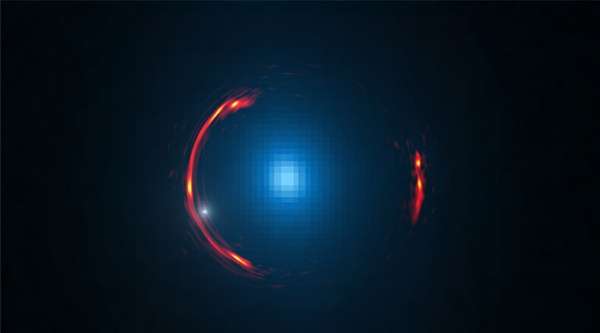
For the sake of their study, which appeared recently in the July 1st issue of The Astrophysical Journal Letters, the research team relied on data obtained from the Hubble Frontier Fields (HFF) program. Taking advantage of improvements made in recent years, they were able to examine the magnitude of particularly faint and distant galaxies.
As Menci explained, this is a relatively new ability which the Hubble Space Telescope would not have been able to do a few years ago:
"Since galaxy formation is deeply affected by the nature of DM on the scale of dwarf galaxies, a powerful tool to constraint DM models is to measure the abundance of low-mass galaxies at early cosmic times (high redshifts z=6-8), the epoch of their formation. This is a challenging task since it implies finding extremely faint objects (absolute magnitudes M_UV=-12 to -13) at very large distances (12-13 billion of light years) even for the Hubble Space Telescope.
"However, the Hubble Frontier Field programme exploits the gravitational lensing produced by foreground galaxy clusters to amplify the light from distant galaxies. Since the formation of dwarf galaxies is suppressed in WDM models – and the strength of the suppression is larger for lighter DM particles – the high measured abundance of high-redshift dwarf galaxies (~ 3 galaxies per cube Mpc) can provide a lower limit for the WDM particle mass, which is completely independent of the stellar properties of galaxies."
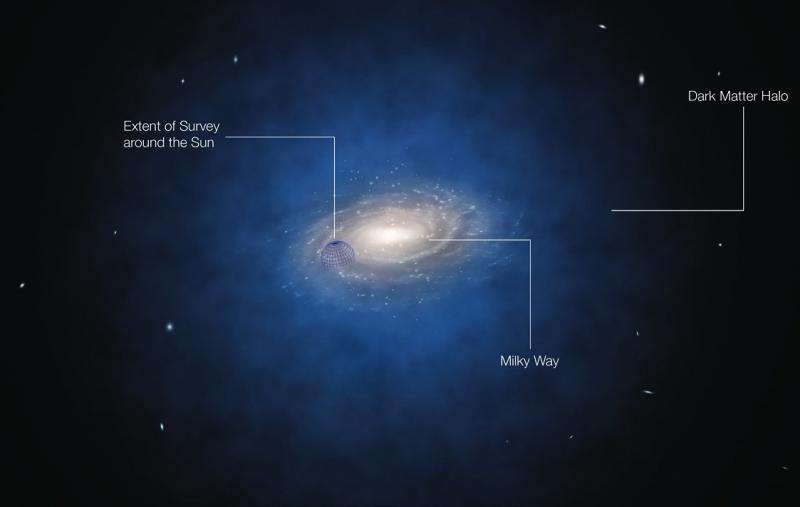
The results they obtained provided strict constraints on dark matter and early galaxy formation, and were thus consistent with what HFF has been seeing. These results could indicate that our failure to detect dark matter so far may have been the result of looking for the wrong kind of particles. But of course, these results are just one step in a larger effort, and will require further testing and confirmation.
Looking ahead, Menci and his colleagues hope to obtain further information from the HFF program, and hopes that future missions will allow them to see if their findings hold up. As already noted, these include infrared astronomy missions, which are expected to "see" more of the early universe by looking beyond the visible spectrum.
"Our results are based on the abundance of high-redshift dwarfs measured in only two fields," he said. "However, the HFF program aims at measuring such abundances in six independent fields. The operation of the James Webb Space Telescope in the near future – with a lensing program analogous to the HFF – will allow us to pin down the possible mechanisms for the production of WDM particles, or to rule out WDM models as alternatives to CDM," he said. "
For almost a century, dark matter has been a pervasive and ellusive mystery, always receding away the moment think we are about to figure it out. But the deeper we look into the known universe (and the farther back in time) the more we are able to learn about the its evolution, and thus see if they accord with our theories.
More information: A Stringent Limit on the Warm Dark Matter Particle Masses From the Abundance of Z = 6 Galaxies in the Hubble Frontier Fields. Astrophysical Journal. DOI: dx.doi.org/10.3847/2041-8205/825/1/L1
Journal information: Astrophysical Journal
Source: Universe Today



















